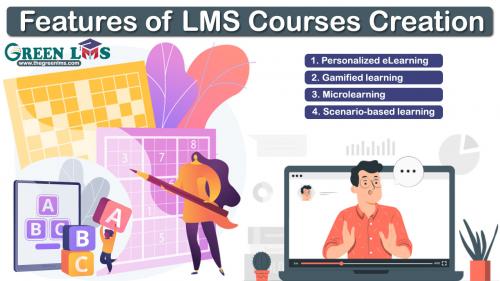The Smart Buyer's Guide: 8 Tips for Choosing the Perfect LMS for Your Business

Choosing a Learning Management
System (LMS) can feel overwhelming. The market is crowded, and every vendor
promises the perfect solution. The key is to look beyond marketing buzzwords
and focus on the features and factors that truly matter for your organization's
success. Let's delve deeper into each of the 8 tips:
Tip
1: Begin with Self-Assessment, Not Sales Pitches
- Define specific use cases: Are you onboarding new hires
across multiple states with complex regulations? Looking to close skill
gaps in your customer service team? Detail these scenarios for vendors to
truly understand your needs.
- Identify learner demographics: Are your users tech-savvy
office workers who'll primarily use the LMS on desktops? Or frontline
employees needing on-the-go access via mobile devices?
- Prioritize current pain points: Are you struggling with
inconsistent training quality, time-consuming manual work for
administrators, or can't track the impact of your current training
initiatives?
- Budget considerations: Explore both subscription
models (per user, per active user) and potential one-time purchase
options. Factor in implementation costs (vendor setup vs. your IT team),
additional features with fees, and dedicated support packages.
Tip
2: Focus on the Essential Features
- Ease of Use (Look Beyond the
Visuals): Prioritize
intuitive navigation and clear workflows for both learners and those
creating/managing courses. Can a non-technical person easily add content
and track progress?
- Content Creation Variety: Assess the range of formats
supported (videos, interactives, scenario-based simulations, existing
SCORM content). Consider the potential costs of outsourcing content
development if in-house tools are limited.
- Data Beyond Basic Reporting: Look for the ability to track
engagement metrics (content completion time, drop-off points, feedback
surveys) and, ideally, options to integrate LMS data with other HR systems
for a holistic view.
- Mobile First, Not Mobile
'Also': Test the
platform yourself on a smartphone and tablet. Does the interface adjust
smoothly? Can you download elements for offline access when connectivity
is unreliable?
Tip
3: Look for Features that Support Your Vision
- Gamification Done Right: Consider if it fits your
company culture. Well-designed leaderboards and meaningful rewards can be
effective, while poorly implemented badges feel gimmicky.
- Social Learning Options: Does the platform support
robust discussion forums, content rating/commenting, or easy sharing of
user-generated resources? These features need to be well-integrated to
enhance rather than distract from core learning.
- Personalization Levels: Basic options might be
role-based pathways, while more advanced platforms could offer AI-powered
course recommendations or adaptive learning that adjusts difficulty based
on performance.
- Microlearning Support: If providing bite-sized,
searchable content alongside formal courses is important, check if the LMS
is designed for this approach.
Tip 4: Prioritize
Integrations
- HR/HRIS Alignment: Explore automation options for
syncing employee records, job roles, and automatically triggering
enrollment in mandatory training.
- Content Authoring
Compatibility:
Confirm supported file types, how smoothly content uploads, and if you can
preview and make minor edits directly inside the LMS.
- Communication Tool Tie-Ins: Look for features like
announcement integration, the ability to link course material to specific
chat channels, or options to pull discussion threads into the LMS for
ongoing reflection.
Tip
5: Don't Neglect Security
- Data Protection: Ask about encryption standards
(both at rest and in transit), server locations (for data sovereignty
laws), and backup procedures.
- Access Controls & Audit
Trails: Ensure
fine-grained control for different roles (HR admin vs. content author vs.
manager vs. learner) and the ability to track changes for troubleshooting or
compliance.
- Certifications & Vendor
Transparency:
Look for SOC 2, ISO/IEC 27001 certifications, and ask if the vendor does
penetration testing and provides documentation of their security
practices.
Tip
6: Test Drive Before You Commit
- Free Trials with Full Access: Don't just watch a
pre-recorded demo. Upload your own sample content, invite a few test
users, and design a mini-course to experience the platform's capabilities
first-hand.
- Personalized Demos Focused on
You: Prepare a list of 'must-have'
and 'nice-to-have' features. Ask the vendor to demonstrate how they'd
handle your specific use cases.
Tip
7: Consider Vendor Support & Reputation
- Support Channels: Is support limited to email
tickets, or are phone and live chat options available? How quickly can you
expect a response?
- Self-Service Resources: A robust knowledge base, video
tutorials, and active user community indicate the vendor's commitment to
your success even beyond the sale.
- Independent Reviews &
Trust: Read
reviews on sites like G2 or Capterra. Pay attention to detailed mentions
of pros, cons, and customer service experiences.
Tip
8: Assess the Total Cost of Ownership (TCO)
- Scalability: If rapid growth is expected,
ensure the pricing structure and platform can scale without hitting usage
caps or sudden price jumps.
- Customization: Is the platform
'out-of-the-box', or does extensive tailoring to your workflows incur
extra development costs?
- Maintenance & Continuous
Improvement:
Find out how often new features are released, if there is a roadmap for
innovation, and whether this is included in your subscription plan.
Conclusion
Choosing the right LMS is a
strategic investment. By taking a methodical approach, prioritizing your unique
needs, and partnering with a reputable vendor, you'll set your business and
employees up for long-term learning success.
Post Your Ad Here
Comments